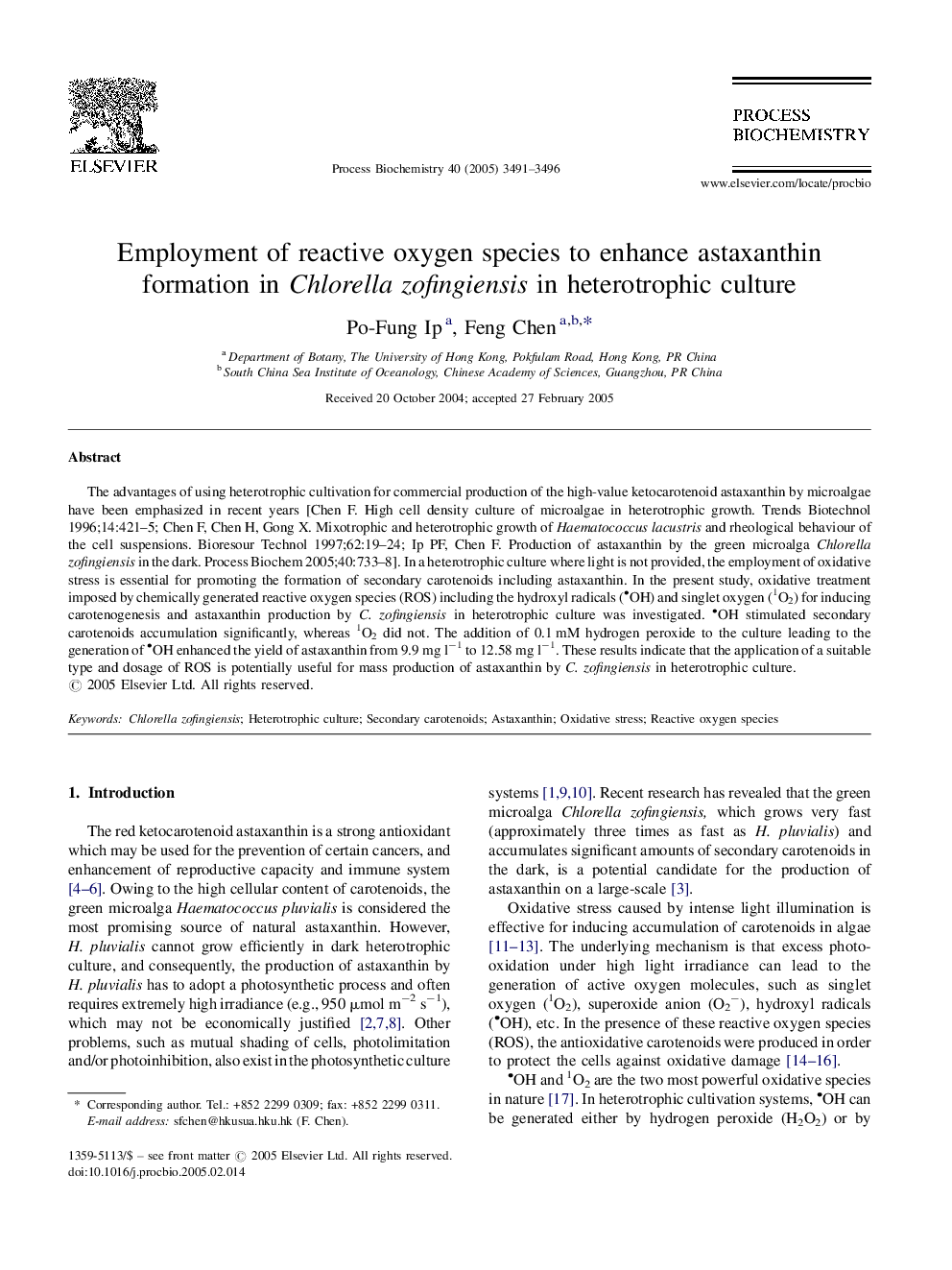| Article ID | Journal | Published Year | Pages | File Type |
|---|---|---|---|---|
| 36506 | Process Biochemistry | 2005 | 6 Pages |
The advantages of using heterotrophic cultivation for commercial production of the high-value ketocarotenoid astaxanthin by microalgae have been emphasized in recent years [Chen F. High cell density culture of microalgae in heterotrophic growth. Trends Biotechnol 1996;14:421–5; Chen F, Chen H, Gong X. Mixotrophic and heterotrophic growth of Haematococcus lacustris and rheological behaviour of the cell suspensions. Bioresour Technol 1997;62:19–24; Ip PF, Chen F. Production of astaxanthin by the green microalga Chlorella zofingiensis in the dark. Process Biochem 2005;40:733–8]. In a heterotrophic culture where light is not provided, the employment of oxidative stress is essential for promoting the formation of secondary carotenoids including astaxanthin. In the present study, oxidative treatment imposed by chemically generated reactive oxygen species (ROS) including the hydroxyl radicals (OH) and singlet oxygen (1O2) for inducing carotenogenesis and astaxanthin production by C. zofingiensis in heterotrophic culture was investigated. OH stimulated secondary carotenoids accumulation significantly, whereas 1O2 did not. The addition of 0.1 mM hydrogen peroxide to the culture leading to the generation of OH enhanced the yield of astaxanthin from 9.9 mg l−1 to 12.58 mg l−1. These results indicate that the application of a suitable type and dosage of ROS is potentially useful for mass production of astaxanthin by C. zofingiensis in heterotrophic culture.
